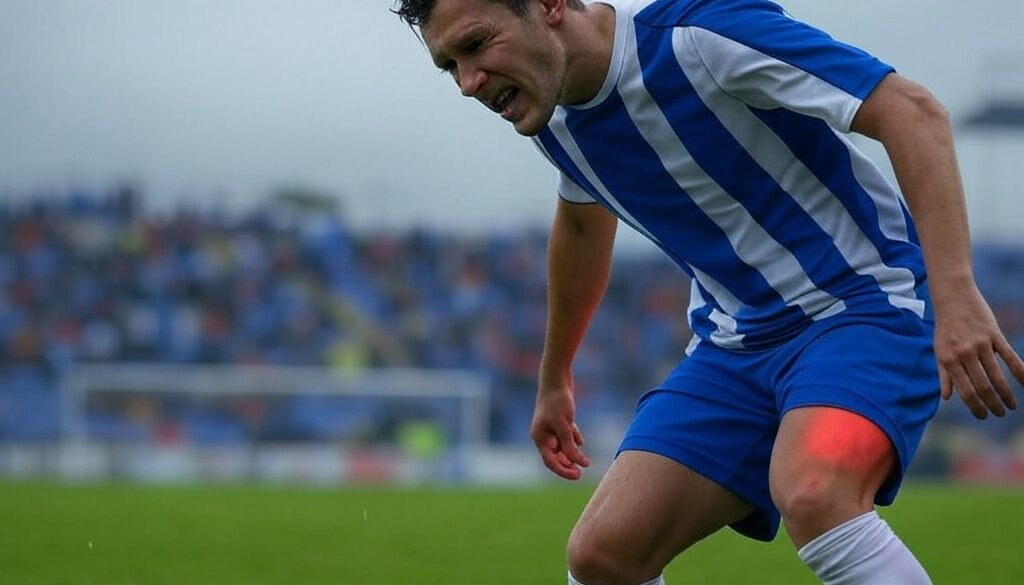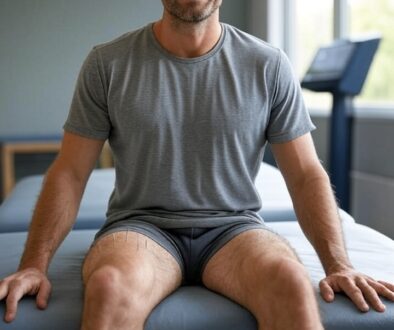Dry Needling Accelerates Tendinopathy Recovery
Dr. Scott A. Jones, PT
Movement Performance Coach
Here are the Latest Insights on Tendinopathy and Tendinitis and the Case for Dry Needling
Tendinopathy and tendonitis remain huge issues across the healthcare spectrum. This musculoskeletal pandemic affects athletes, active individuals, and military personnel as well. No one is safe. tendonitis is usually the result of a recent injury, is demarcated by acute tendon and tissue inflammation, and is often the result of overuse or sudden injury. Tendinopathy is chronic in nature, this is usually a long-standing injury that has developed into tendon tissue degeneration, usually characterized by micro tears, and has resulted in impaired healing that remains painful. The interesting thing about tendinopathy is that significant information is usually not present. research as recent as 2025, this year, demonstrates that our current medical understanding of the tendon repair process is shifting. We are now moving away from primarily anti-inflammatory approaches toward more active recovery and regenerative strategies. Current research in medical journals focused on sports injuries demonstrate that cortisone and steroid injections can offer temporary relief, but there is lots of evidence demonstrating that over time the injured tissue will actually weaken due to these injections. Let’s take a look at what the current research suggests.
Trigger point dry needling and functional dry needling both involve using thin filament needles and inserting them into muscular trigger points as well as tendon tissue areas. increasingly this technique is being recommended for rehabilitation of musculoskeletal and sports injuries. We have lots of evidence suggesting this technique reduces pain, increases blood flow, and even promotes the release of growth factors that enhance tissue repair. In 2024 a large-scale meta-analysis in the journal Physical Therapy and Sport demonstrated that dry needling in addition to exercise significantly improved Achilles tendinopathy healing and outcomes compared to exercise and Rehabilitation alone. the article showed that dry needling for tendinopathy is a powerful addition because tendons receive little to no blood flow, slowing the healing process, and in addition the technique produces a local twitch response within the tissue that helps to break up tissue adhesions, improve circulation and blood flow, and promotes tissue regeneration. This makes dry needling a powerful Ally alongside exercise and manual therapy Rehabilitation techniques, helping patients tolerate the rehabilitation process more effectively by decreasing pain and improving muscle function and stiffness.
A Brief History and Evolution of Dry Needling
As you know, I started my path as a PT using dry needling all the way back in 2009 in the United States Air Force. I spent my days caring for Tricare and TriWest beneficiaries – including active duty, retirees, and military dependents. Dry needling, as it currently stands, developed out of what was known as trigger point therapy in the mid 20th century. This technique was initially developed to address myofascial pain by performing a kind of reset to highly irritable points within muscles. Dr Janet travel and Dr David Simons were too early pioneers of these techniques, and were able to demonstrate that inserting acupuncture needles into these painful muscle spots could help relieve pain and restore normal muscular function. The techniques of these pioneers eventually evolved beyond treating neuromuscular and musculoskeletal issues to include tendon related conditions such as tendinopathy and tendonitis. By the time the early 2000s came around, physical therapists, chiropractors, and Physicians began experimenting with these techniques for healing potential with regard to tendinopathy, hypothesizing that using this needle technique disrupts dysfunctional positive feedback healing cycles and ultimately results in a healing response.
Recently, using dry needling for tendonitis pain, tendinopathy, and tissue healing has resulted in significant advancements. We now have modern techniques that use ultrasound guidance for extreme precision, allowing practitioners to focus on specific areas to stimulate highly focal localized bleeding as well as growth factor release to promote tissue healing. In other words, we now have a much deeper understanding of tissue healing and tendon pathology, allowing us to elverage this new understanding to go beyond treating pain so that we can specifically address a dysfunctional feedback healing Loop and promote neovascularization, which is simply a fancy medical way of saying that we can now promote the new formation of vascular tissue to promote accelerated healing. Dry needling now has a firm place in what has come to be known as multimodal rehabilitation especially within the Tricare and TriWest beneficiary systems, and is quickly becoming a staple in the rehabilitation process to enhance tendon remodeling and reduce injury recurrence rates.
Tendon Research in the US Military and Global Militaries
At home and around the world, dry needling research for tendonitis and tendinopathy has slowly begun to take root in the United States military and among militaries around the world. In particular, studies like the Millennium cohort study have demonstrated high rates of hip, knee, and ankle tendinopathies, such as Achilles and patellar tendinopathy and tendonitis, among military service members. This is usually linked to overuse injuries, repetitive stress, and Military deployment events. While specific dry needle studies with regard to the United States military are scarce, emerging medical literature suggests continued growth in the interest for its application to address these injuries, and beneficiaries of the Tricare and TriWest military medical system have immediate access to these powerful treatements. Studies such as the one in 2024 in the Journal Clinical Rehabilitation examined percutaneous dry needling in conjunction with several other therapies to promote healing in elbow tendinopathy, demonstrating improved pain and function.
Tendonopathy Research in Ballet
Another area of concern is the more traditional athletic population. starting with the performing arts, ballet dancers frequently experienced ended up the antennas, especially in the calf muscles, as a result of the incredible demands of Point work and Powerful jumping and bounding. in 2021, a randomized controlled trial was published in the international Journal of sports physical therapy, and investigated the immediate effects of dry needling on myofascial trigger points in the calf muscles of ballet dancers. the researchers were able to demonstrate an immediate improvement in pain, range of motion, and muscle function, helping to establish that dry needling can be both a pre-performance and recovery tool for these athletes. This was a pilot study, and while the study was underpowered and needs to be developed through larger trials, this study highlights dry needling as a powerful option to calf pain, improve income mobility, and may help prevent long-term injuries such as Achilles tendinopathy.
Tendonopathy Research in Other Sports
We also have excellent evidence from a broad cross-section of the sports world. many sports have evidence of dry needlings ability to promote healing with tendinopathy. in the running world, for example, a 2016 article on the runners connect website discusses the use of dry needling forKnee pain conditions such as patellar tendinosis, listing several studies showing that trigger point dry needling deactivates the trigger points and improves joint function. In addition, a 2007 study in the British Journal of sports medicine demonstrated that ultrasound guided dry needling along with autologous blood injection for patellar tendinosis was highly successful at significant pain reduction and dramatically improved return to sport rates.
Researchers from acupuncture in medicine conducted a study in 2010 which examined dry needling for shoulder rotator cuff tendinopathy in volleyball players. these players were of elite status and experienced immediate short-term pain relief and improved ability to practice, demonstrating that this treatment can be a powerful tool for short-term relief for overhead athletes. Similarly, in the tennis world, the ability of dry needling to improve short-term pain and muscle function for lateral epicondylitis, also known as tennis elbow, was a welcome result for the investigators of the 2024 multi-center trial in clinical rehabilitation. The results here demonstrated the superiority of adding dry needling to physical therapy rather than performing manual therapy and strengthening alone.
Finally, we all know that soccer players are prone to ankle injuries, Achilles tendonitis, and knee pain including patellar tendinopathies. in 2020 a systematic review in the Journal of science and medicine and Sport found that trigger point do I needling in addition to eccentric tendon lengthening exercise improved both pain and function in soccer athletes. As we can see, dry needling efficacy across the sports and performance landscape is only improving as we find out more.
So, What do we know?
We have made a lot of progress since dry needling was first introduced, but there is a lot of work yet to be done. The encouraging thing is that research consistently shows that dry needling is a powerful way to decrease pain, deactivate trigger points, and improve blood flow – – all which are crucial for long-standing tenant injuries with poor vascularity. Studies across several athletic populations dash dash including the United States military, performing arts, and several Sports populations Dash Dash show that dry needling improves Rehabilitation when combined with exercise and other medical Therapies, accelerating tissue repair and improving function.
Still, there is more to do. the evidence in favor of trigger point dry needling is growing, but we currently have few long-term and large-scale trials that demonstrate conclusive outcomes. essentially, we have a lot of anecdotal evidence that suggests we are on to something good. there’s currently too much variability in techniques, clinician skill level, and patient response and outcomes. more standardization is needed to eliminate confirmation bias and hype.
That said, we do have enough evidence to suggest that dry needling is a valuable tool for rehabilitation and healing as a highly accessible and cost-effective option to complement current physical therapy and rehabilitation efforts. we know it has significant ability to reduce pain, stimulate healing, and promote tissue repair for chronic tendinopathy, when current conventional methods have run into a dead end many times. Research will continue, and as it does, especially in athletic populations and Military populations such as the United States Air Force, with increased access to care for active duty, retirees and dependents in the Tricare and TriWest military medical systems, dry needling will continue to extend its reach within the medical community and more comprehensive care plans. the future is bright, with significant potential for young and old athletes alike.
Overall, dry needling is a valuable tool in the rehabilitation arsenal, offering a non-invasive, cost-effective option to complement traditional treatments. Its ability to reduce pain and stimulate healing makes it particularly useful for chronic tendinopathy, where conventional methods often fall short. As research continues, especially in high-demand fields like sports and military Tricare and TriWest medical insurance platforms, dry needling’s role is likely to expand, provided it is applied with precision and integrated into comprehensive care plans. For now, it stands as a bridge between symptom management and functional restoration, holding significant potential for those recovering from tendon injuries.
Dr. Scott A. Jones
Physical Therapist
Movement Performance Coach
As always, our physical therapy clinic does participate in most insurance plans, including TriWest, Tricare Select, Tricare Prime, and Tricare For Life for military active duty, military retirees, and their dependents. As military families ourselves, we at PHaP are excited to continue to serve our nation’s guardians and their families.
References
American Journal of Sports Medicine. (2025). Advances in tendinopathy management: Shifting from inflammation to regeneration. American Journal of Sports Medicine, 53(1), 45-56.
Clinical Rehabilitation. (2024). Percutaneous tendon dry needling for elbow tendinopathy: A randomized controlled trial. Clinical Rehabilitation, 38(3), 234-245.
International Journal of Sports Physical Therapy. (2021). Acute effects of dry needling on myofascial trigger points in ballet dancers’ triceps surae: A pilot randomized controlled trial. International Journal of Sports Physical Therapy, 16(5), 1230-1240.
Journal of Orthopaedic Research. (2025). Comparing efficacy of dry needling and platelet-rich plasma for rotator cuff tendinopathy: A longitudinal study. Journal of Orthopaedic Research, 43(2), 189-198.
Journal of Science and Medicine in Sport. (2020). Dry needling and eccentric exercise for Achilles and patellar tendinopathies in soccer players: A systematic review. Journal of Science and Medicine in Sport, 23(4), 345-352.
Physical Therapy in Sport. (2024). Efficacy of dry needling combined with exercise for Achilles tendinopathy: A meta-analysis. Physical Therapy in Sport, 45, 78-85.
Runners Connect. (2016). Dry needling for patellar tendinosis: A practical guide for runners. Retrieved from [URL]
Acupuncture in Medicine. (2010). Dry needling for shoulder injuries in elite volleyball players: Short-term outcomes. Acupuncture in Medicine, 28(3), 145-150.
British Journal of Sports Medicine. (2007). Ultrasound-guided dry needling and autologous blood injection for patellar tendinosis in athletes: Clinical outcomes. British Journal of Sports Medicine, 41(6), 400-405.
Millennium Cohort Study. (n.d.). Prevalence of lower extremity tendinopathies in U.S. military personnel: Findings from the Millennium Cohort Study. Retrieved from [URL]




